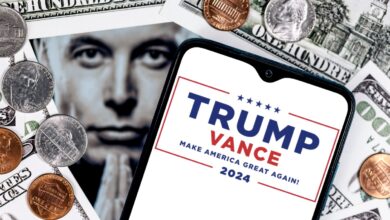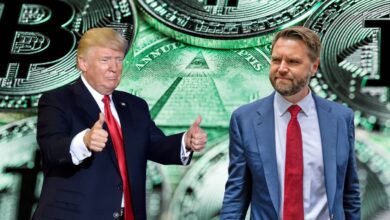Navigating the Economic Crossroads: Fed’s Upcoming Decisions

Last Updated: 20.3.2024 21:17
The U.S. Federal Reserve has been grappling with inflation without triggering a recession. Now, we know that inflation is no longer at the forefront of investors minds.
However, new challenges like an autoworkers strike, looming government shutdown, and the resumption of student loan payments could tip the scales, making this a critical juncture for investors to navigate.
Fed’s Balancing Act: Inflation and Recession
The U.S. Federal Reserve is walking a tightrope as it aims to control inflation without triggering a recession. As officials gather for their upcoming meeting, they face new challenges that could disrupt their best-case scenarios. These include an autoworkers strike, a potential government shutdown, and the resumption of student loan payments.
The Triple Threat: Autoworkers Strike, Government Shutdown, and Student Loans
The United Auto Workers have initiated a strike against major automakers, and the federal government is on the brink of a shutdown as spending authorizations expire at the end of September. Additionally, student loan repayments are set to restart in October after a three-year hiatus. While these events individually may not alter the Fed’s short-term risk assessment, their combined impact could have unpredictable consequences on consumer spending and inflation.
The Goldman Sachs Warning: A Fourth-Quarter “Pothole”
Goldman Sachs economists have revised their generally bullish outlook, warning of a fourth-quarter “pothole” that could reduce GDP growth by more than a percentage point. This is a significant deviation from the Fed’s own projections and could signal a more cautious approach in the coming months.
????ALSO READ: Top 3 Dividend Oil Stocks With Double-Digit Upside as Crude Oil Surges
The Ripple Effect: How Current Events Could Jolt the Economy
With aggressive Fed interest rate hikes still in play, tightened credit conditions, and dwindling pandemic-era savings, the economy is vulnerable to shocks. Vincent Reinhart, chief economist at Dreyfus and Mellon, suggests that the drawdown of the Fed’s balance sheet could unexpectedly tighten financial conditions, adding another layer of risk.
What’s Next for the Fed and Investors?
The Fed is expected to maintain its policy rate between 5.25%-5.5% at its September meeting. However, the atmosphere and language around the meeting could shift due to emerging risks. For investors, it’s crucial to monitor these developments closely as they could influence the Fed’s future decisions on interest rates and monetary policy.
What are your thoughts on the upcoming FED meeting? Let us know on our latest post on Instagram! @wealthy_venturecapitalist ????
Read More:
Follow Wealthy VC on Socials: Threads | Facebook | Instagram | Twitter | LinkedIn | GETTR | Tumblr
????Join the Discussion in the Wealthy VC Investor Group
????Have a Stock Tip or New Story Suggestion? Email us at Invest@WealthyVC.com




